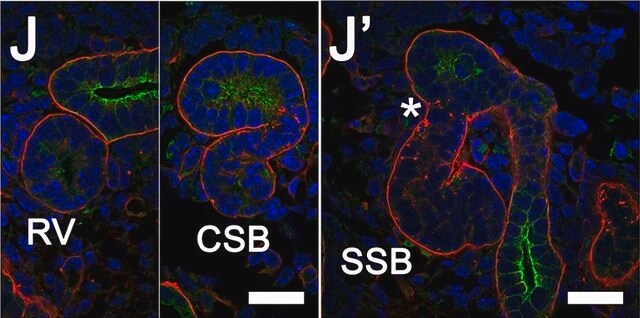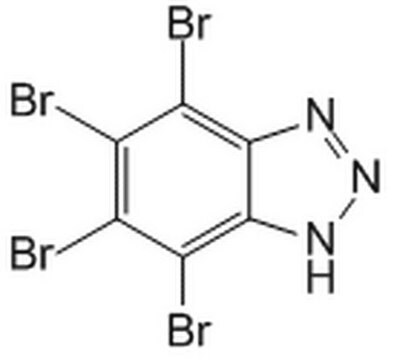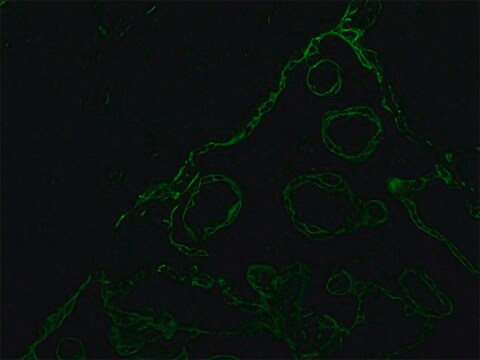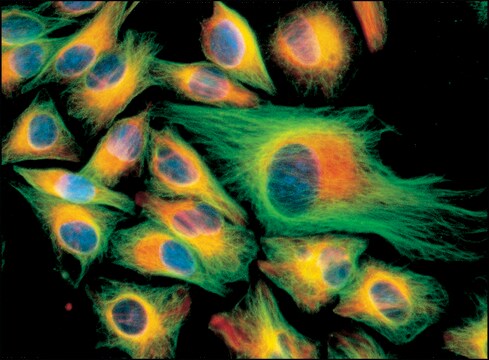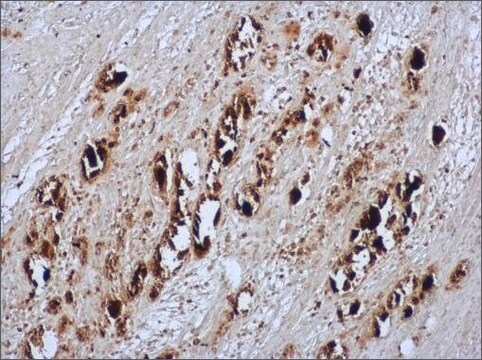SAB4700666
Monoclonal Anti-Cytokeratin (Pan-reactive) antibody produced in mouse
clone C-11, purified immunoglobulin, buffered aqueous solution
Synonym(s):
Mouse Anti-Cytokeratin, Pan-reactive Cytokeratin Detection
Sign Into View Organizational & Contract Pricing
All Photos(1)
About This Item
UNSPSC Code:
12352203
NACRES:
NA.41
conjugate:
unconjugated
application:
FACS
clone:
C-11, monoclonal
species reactivity:
mammals
citations:
5
technique(s):
flow cytometry: suitable
Recommended Products
biological source
mouse
Quality Level
conjugate
unconjugated
antibody form
purified immunoglobulin
antibody product type
primary antibodies
clone
C-11, monoclonal
form
buffered aqueous solution
species reactivity
mammals
concentration
1 mg/mL
technique(s)
flow cytometry: suitable
isotype
IgG1
shipped in
wet ice
storage temp.
2-8°C
target post-translational modification
unmodified
Gene Information
human ... KRT1(3848)
General description
Cytokeratins also known as keratins are filament-forming proteins of epithelial cells. In humans, there are 54 cytokeratins. These proteins are divided in to two sub-categories such as acidic type I keratins and basic-to-neutral type II keratins.
The antibody C-11 reacts with Cytokeratin peptides 4, 5, 6, 8, 10, 13, 18. Cytokeratins are a member of intermediate filaments subfamily represented in epithelial tissues.
Immunogen
Keratin-enriched preparation from human epidermoid carcinoma cell line A431
Application
Monoclonal Anti-Cytokeratin (Pan-reactive) antibody produced in mouse has been used in immunocytochemistry.
The reagent is designed for Flow Cytometry analysis. Suggested working dilution for Flow Cytometry is 0.5 μg/mL of sample. Indicated dilution is recommended starting point for use of this product. Working concentrations should be determined by the investigator.
Biochem/physiol Actions
Cytokeratins play an essential role in normal tissue structure and function. It also facilitates the maintenance of cell mechanical integrity.
Features and Benefits
Evaluate our antibodies with complete peace of mind. If the antibody does not perform in your application, we will issue a full credit or replacement antibody. Learn more.
Physical form
Solution in phosphate buffered saline, pH 7.4, with 15 mM sodium azide.
Disclaimer
Unless otherwise stated in our catalog or other company documentation accompanying the product(s), our products are intended for research use only and are not to be used for any other purpose, which includes but is not limited to, unauthorized commercial uses, in vitro diagnostic uses, ex vivo or in vivo therapeutic uses or any type of consumption or application to humans or animals.
Not finding the right product?
Try our Product Selector Tool.
Storage Class Code
10 - Combustible liquids
Flash Point(F)
Not applicable
Flash Point(C)
Not applicable
Choose from one of the most recent versions:
Already Own This Product?
Find documentation for the products that you have recently purchased in the Document Library.
Cytokeratin expression, fibrillar organization, and subtle function in liver cells
Marceau N and Loranger A
Biochemistry and Cell Biology = Biochimie Et Biologie Cellulaire, 73, 619-625 (1995)
Evaluation of a simple method for storage of blood samples that enables isolation of circulating tumor cells 96 h after sample collection
Apostolou P
Journal of biological research (Thessalonike?, Greece) (2017)
New consensus nomenclature for mammalian keratins
Schweizer J
The Journal of Cell Biology, 174, 169-174 (2006)
Panagiotis Apostolou et al.
Journal of biological research (Thessalonike, Greece), 24, 11-11 (2017-10-05)
Minimizing the effects of transportation on the properties of biological material is a major challenge for the scientific community. The viability of cells is important in cases where their study is urgent for evaluation of treatment response or for the
Martine Broekema et al.
Kidney international, 68(6), 2572-2581 (2005-12-01)
Ischemia/reperfusion (I/R) injury is a major cause of acute renal failure (ARF). ARF is reversible, due to an innate regenerative process, which is thought to depend partly on bone marrow-derived progenitor cells. The significance of these cells in the repair
Our team of scientists has experience in all areas of research including Life Science, Material Science, Chemical Synthesis, Chromatography, Analytical and many others.
Contact Technical Service